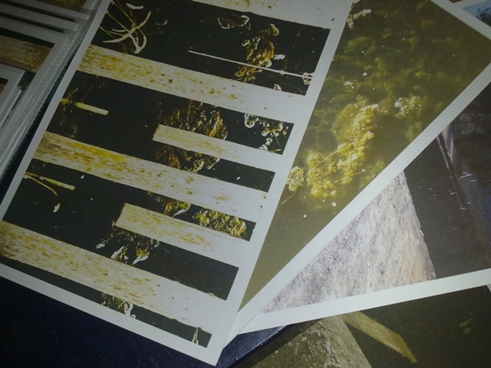
obs * миф (л65)|042 cdr solo
limited to 65 num copies
Sala
Plotina
New myth, new great record from the Lithuanian sound artist Audrius Simkunas gives us a terrifying and low roar of a dam (replacing the background drone and we have a very successful chance to observe the development of this theme) and there are sometimes manifested signs of the environment. you can hear the voices of birds and the rustle of plants ... Try some!
"This is a perfect fluid, having no age nor hours,
surviving scarless, unaltered, loving rest,
willing to run forever to find its peace
in equal seas in currents of still glass."
(Muriel Rukeyser "The Dam")
Field material recorded May-April, 2012
Arranged, transformed and mixed July, 2012
Photo: Audrius Simkunas.
4.10.12
Traditionally music is linked to performance. At a gig you expect the musicians to play whilst you, the listener, catch the vibrations in the air as they radiate towards your ears, like ripples across the surface of a pool of water. The sounds come at you, then into you and your software (that clever grey lump of jelly in your head) filters it and constructs meaning from the sensory input.
In a sense you are outside the music, a spectator, a consumer, a non-participant. It arrives fully formed often carrying a narrative, a text in the form of lyrics, a song with clear boundaries and a formula to ease digestion. Hooks to latch onto, repetition, a beat, but these attributes allow the mind to switch off and disengage. There is no need to look beneath the surface when something is so shallow that you can’t help but see the bottom anyway.
Of course this isn’t to decry all songs, all tunes or all composed music. The point is to highlight a different approach. A way of listening that dispenses with anticipating the next chorus or guessing when the next variation in the main theme will occur.
Plotina is an example of where the non-interventionist model of listening is redundant and a much deeper connection between the listener and the media is required. To understand Plotina by remaining outside it and patiently waiting for it to give up its secrets is futile. It doesn’t function that way.
It is fluid in nature and it needs to be entered into, not skimmed over or admired from the shore. Within the all-encompassing roar, which comes from all directions at once like the microwave background radiation permeating deep space, are movements and disturbances.
Cocooned in Plotina’s liquid midst currents fluctuate and shift direction. In the distance perhaps creatures are moving. Maybe bird calls can be heard from far away. Or maybe they’re just memories of a more familiar world that was left behind once the surface of this body of fluid swallowed us.
Listening Audrius Simkunas’ work is like marine archaeology. In the murk a glint of light occasionally betrays a much larger structure. The shapes are impossible to make out, but abandoned machines of unaccountable provenance seem to exist in the depths. Plotina probes an unmapped ocean, perhaps the sentient sea of Solaris being explored in a search for the kernel of its consciousness. Scale becomes irrelevant.
Four large photographs, all depicting fluid in one way or another, are included in the packaging. The Observatoire label again provides a telling visual accompaniment to the sound, intent on deepening the intrigue rather than explaining it.
A wall plunges down into still, turgid water. Clouds of matted algae choke a stagnant pool. Concrete pillars disappear beneath a black, motionless surface. All visual signifiers to the long, deep descent into the roar of Plotina. Who can say what might be found down there?
Chris Whitehead, The Field Reporter
fragment: Sala-Plotina.mp3







